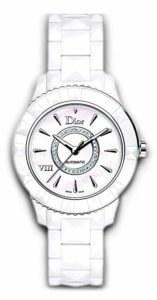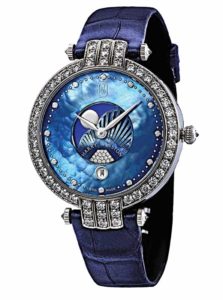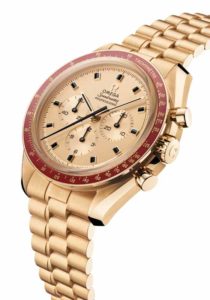Changing faces: Looking to the future of the global watch industry
by Samantha Ashenhurst | July 31, 2019 10:14 am
By Carly Midgley
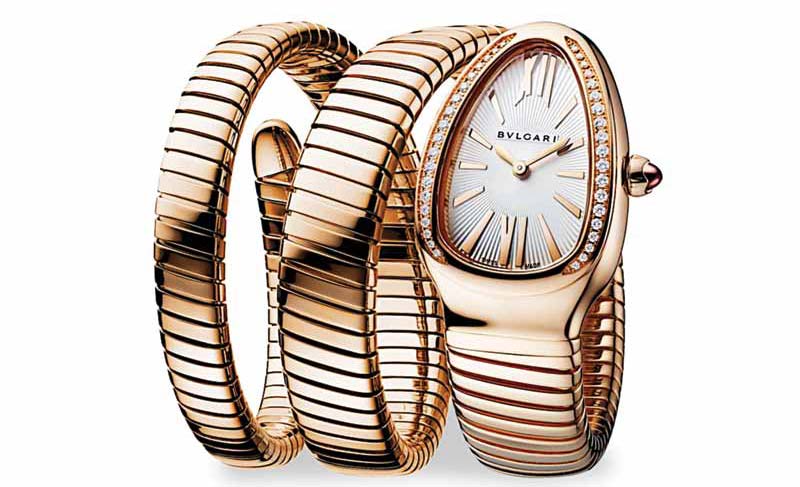 [1]
[1]Photo courtesy Bvlgari
It’s been said the only constant is change, and the individuals who shape the world’s watch industry are certainly no strangers to that concept. Once a practical tool, now a symbol of personal style and wealth, the watch has continually evolved over the years to align with its ever-developing customer base.
“Because cell phones tell time, it is no longer necessary for a consumer to wear a watch for that purpose,” says Dianne Reichenbach, sales director for Toronto-based distributor Kingsmen. “As a result, the fashion watch category—where a watch is an accessory that also tells time—continues to expand.”
 [2]
[2]Photo courtesy Baume & Mercier London archives, Compagnie Financière Richemont SA
“Today’s young buyer sometimes has a Fitbit, always has a phone, and doesn’t need a watch,” adds Duncan Parker, vice-president of Toronto’s Dupuis Fine Jewellery Auctioneers. “Collectors buy to fill gaps rather than to have something that tells the time.”
In other words, retailers have had to alter their strategies and product offerings to correspond with watch buyers’ new mentality. Doing so effectively means maintaining a thorough understanding of what the modern customer wants—from both the product and the shopping experience—and who he or she is.
Most industry professionals indicate the bulk of today’s watch consumers are males over the age of 25.
“Men are a strong watch demographic,” explains Reichenbach. “They do not have as many accessory options, so they may have a ‘watch wardrobe,’ or a collection.”
Older customers of both genders have demonstrated strong interest in pre-owned timepieces, adds Dan Scott, brand architect with Luxe Licensing, which recently completed an analysis of North American male millennials’ watch shopping habits.
“The pre-owned trend now seems to be more popular among men and women 50 years of age or older,” he explains. “Those under 50 tend to want to wear the current styles and like to buy new.”
As for the popularity of watches among millennials and generation Z, reviews are mixed. Many in the industry have expressed doubts regarding these customers’ interest in timepieces.
“The younger generations are not buying watches, and they are not likely to start,” says Parker.
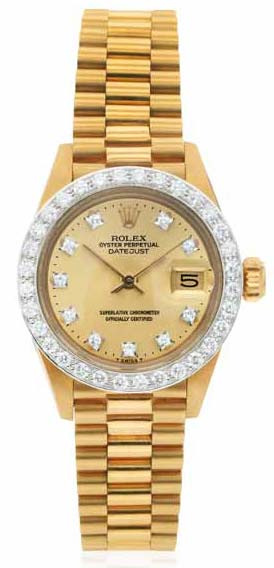 [3]
[3]Photo courtesy Dupuis Fine Jewellery Auctioneers
To capture the technology-focused next generation, he adds, retailers may need to focus on offering lower-priced items that can undercut expensive ‘must-haves’ like the iPhone.
According to Reichenbach, millennials that do purchase timepieces are trending toward retro styles, particularly those that were popular in the 1990s. Additionally, buyers of multiple demographics are focusing on slim cases, leather straps, and blue dials.
“Both genders like blue on a watch face or strap, with men dominating the look in deep blue hues,” says Scott.
Rose gold also continues to be popular among female consumers, with men inclining more toward silver and, to a lesser degree, gold. As for shape, Fred Wenger of Québec-based Wenger’s Ltd. says it’s hip to be square.
“I think square watches will come back in the foreseeable future, because the Apple Watch is a square shape and because the trend has gone to round watch cases for so long,” he explains. “It’ll probably start to shift to square watches just to cut the boredom.”
Circumventing convention seems to be important to modern buyers, as does the impression of quality that comes with a recognized brand.
“Men and women under 40 desire highly recognized brand names, and often seek a more classic design with a modern twist,” Scott says. “A twist could be a diamond- or gemstone-accented fob, sports-aligned insignias, or anniversary series to showcase a brand’s rich history.”
“Younger buyers, especially, are attracted to the ‘providence’ of a watch,” adds Raynald Aeschlimann, CEO of Omega. “If it has a genuine story and spirit, as well as a great design, it’s going to be popular.”
Branding and quality play an equally important role in the sale of estate watches, Parker says, with pieces from notable brands or those with intricate features perennially garnering favour.
“Rolex watches consistently perform well at auction, and the name Patek Philippe always creates interest,” he explains. “Watches with complications also do well. Sometimes, if a watch is so complex that it can be hard to tell the time because there is so much on the dial, it can actually sell quite well, because the owner will still look at his/her phone for the actual time.”
| BASELWORLD 2019: Striving for reinvention |
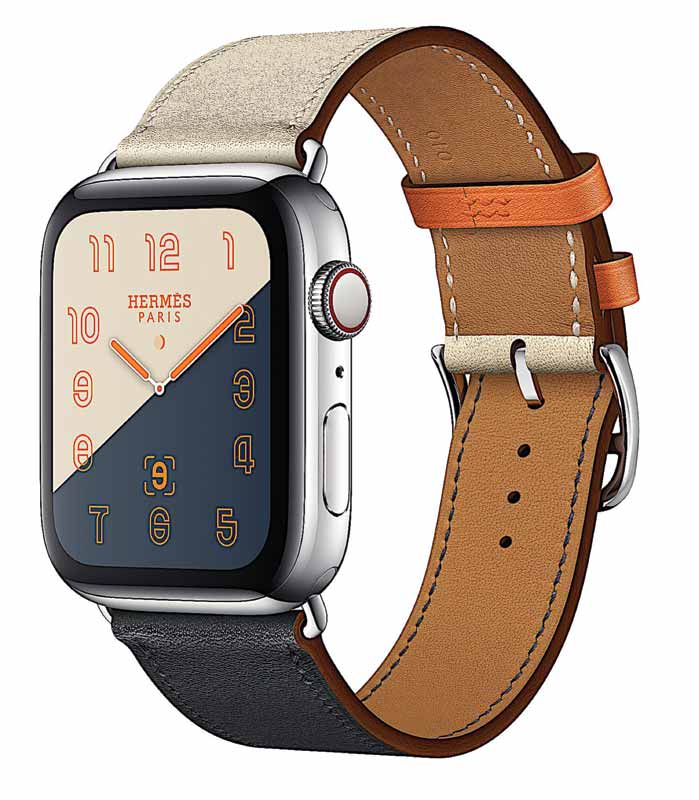 [4] [4]Photo courtesy Apple, Inc. Following last year’s significant drops in foot traffic and exhibitor interest, Baselworld 2019 opened on March 21 amidst promises of change. “We listened carefully to the exhibitors and worked with them to develop a vision and concept for Baselworld 2020 and beyond,” said Hans-Kristian Hoejsgaard, interim CEO of show organizer MCH Group, at the opening press conference. Bernd Stadlwieser, the group’s new CEO, took the reins in February. Change has certainly been in the air, with the group undergoing a number of staffing shuffles (including the departure of longtime CEO, René Kamm, and managing director, Sylvie Ritter) and declaring several new focus areas and strategies between the 2018 and 2019 editions. This year’s opening conference was rife with talk of a changing world, with organizers declaring their intentions to amp up the focus on visitor experience and digital connectivity. For 2019, features such as a new chatbot and revamped website were introduced, and the show’s dates were also adjusted to align with Salon International de la Haute Horlogerie (SIHH). Underlying the buzz, however, was a continuing trend of decline. Exhibitor numbers fell to 520, down from 650 in 2018 and 1300 in 2017. The visitor head count was also 22 per cent lower than in 2018, totalling 81,200 for the show’s six-day run, while the number of media representatives in attendance fell to 3300. Although Baselworld management has described plans for an extensive facelift, creating a digitally integrated environment and expanding everything from the show’s jewellery offerings to its food and hospitality services, many in the industry are wondering if this is simply too little too late. “Luxury jewellery trade shows are often fuelled by exhibitors who haven’t reinvented themselves,” says Dan Scott, brand architect with Luxe Licensing. “What worked 15 years ago doesn’t work now.” As increasing numbers of exhibitors choose not to participate, many industry members are turning to other strategies for remaining competitive. One of the key words is ‘modernization,’ with several brands emphasizing the importance of adapting to an omnichannel environment and creating a luxury experience both in-store and online over the benefits of trade show networking. For now, few report plans to attend in 2020. “I did not get a very positive feeling about the show from the negative publicity about the number of exhibitors withdrawing,” says Fred Wenger of Wenger’s Ltd. “For next year, it’s too early to tell, but there are probably better ways to meet our suppliers than being in Basel.” In the meantime, show organizers are continuing to make efforts to understand and meet the industry’s new needs. Baselworld 2020 is slated to feature a new hall layout, ‘experience zones’ such as a Virtual Reality Zone, improved emphasis on smartwatches, and an interactive exhibition square. Whether this will be enough to reverse the trend of decline remains to be seen, but Baselworld’s managing director, Michel Loris-Melikoff, promises, “We will tackle change with vigour and passion.” Baselworld’s next edition will run from April 30 to May 5, 2020. |
Clicks, bricks, and branding
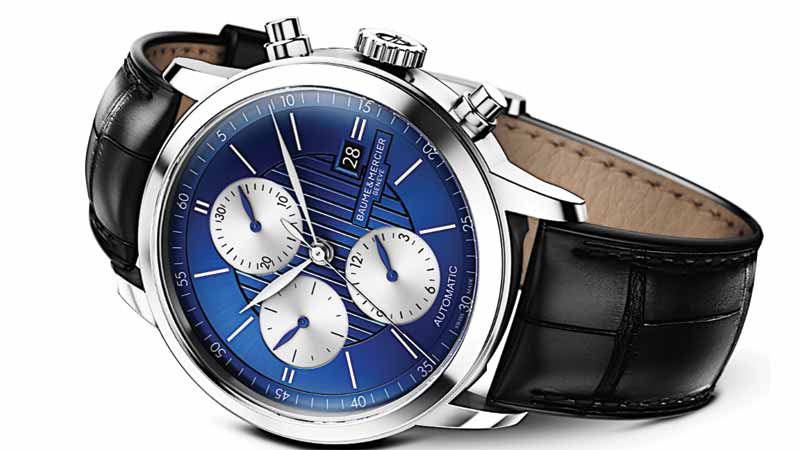 [5]
[5]Photo courtesy Compagnie Financière Richemont SA
It is all but impossible to talk about change in the industry without talking about the increasingly pervasive presence of e-commerce. The digital revolution has played a particularly important role in shaping the shopping habits of younger buyers—although they aren’t necessarily making actual purchases online, says Scott.
“They review detailed watch features, read what the brand stands for (if the company is sponsoring green, sustainable efforts, for example), and do a lot of online price comparing,” he explains.
“Today’s young people have an abundant supply of information. They can chat to other watch fans across the world, check reviews, research history, see thousands of photos, and much more,” adds Aeschlimann. “You can’t just advertise and expect it to stick. You need to create a genuine message that is believable and trustworthy, connect with consumers on their level, and talk to them as if they know a lot already. Be honest, be modern, and share your great enthusiasm for the product.”
The Internet is just one way to share this enthusiasm, albeit an important one. Many industry professionals suggest a retailer who wishes to remain competitive in today’s global market should offer an integrated experience that combines in-store appeal with digital know-how.
“Watch brands and their retailers need to blend bricks with clicks. It’s not enough for a brand to fund and build a shop-in-shop, grant a bit of co-op, or provide pretty pictures to use on a retailer’s site,” says Scott. “Today’s watch retailers must compete with national chains, the brand’s own watch boutiques, and e-commerce’s increasing ability to sell high-ticket items.”
“The store needs to be a full experience utilizing an engaging e-commerce platform plus an engaging brick-and-mortar establishment,” adds Reichenbach.
This means retailers need to maintain a comprehensive and modern digital presence (including features such as high-resolution visuals and details on personalization options), as well as ensuring high-quality service is offered in-store. A retailer who can foster a sense of genuine connection and luxury in both these areas will draw in buyers attracted to the timeless prestige a watch represents.
“In the modern world, watches are about much more than telling the time. They’ve become the ultimate accessory,” adds Aeschlimann. “Unlike a lot of today’s ‘fast fashion’ trends, a watch is something you cherish for many years.”
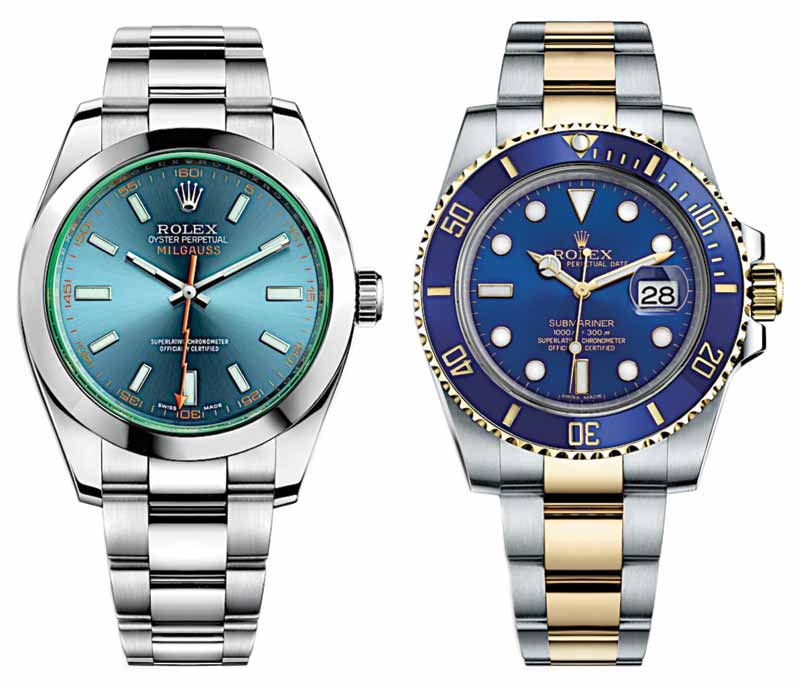 [6]
[6]Photos courtesy Rolex
“For today’s modern man and his watch, one word sums it up: status,” says Scott.
Maintaining this sense of high quality is crucial in drawing in the millennial consumer as well, adds Wenger. Although young buyers seem to have an awareness of luxury timepieces, a high price point and somewhat negative perception of the product are adversely impacting their willingness to purchase.
“Some young people have not worn watches before; there was a period when it was kind of frowned upon,” he says. “So, if you’re going to get them back into watches, it had better be a quality watch, because if their first experience is a bad experience, they’ll be turned off.”
Watching the future
Significant as the watch industry’s evolutions have been, its professionals harbour no delusions that the market is finished changing. Trends in price point, style, and category will only continue to shift—and at an ever-faster pace, given factors such as the global reach of social media.
“In the next five years, I think the average point will become higher and there will be an increase in units worn by the average person,” says Wenger.
“For me, the future is in new materials and new innovations,” says Aeschlimann. “There are a lot of watch brands out there and a lot more choices for customers. So, to stand out, brands will need to find ways to be unique and attractive.”
Parker agrees, saying he believes the market will continue to trend toward unusual, innovative choices.
“We will probably see thinner, more complicated pieces with rare and unusual materials, lab-grown diamond cases, or very high-tech materials,” he says.
Even amidst these changing tides, however, one thing most can agree on is the fact that watches are, ultimately, timeless.
“The fashion watch business is an accessory category in my mind, so although it evolves, it will always have a place, like a handbag or a new pair of shoes,” says Reichenbach.
Consumers and industry professionals alike remain driven by a passion for quality, luxury, and enduring style—and this, at least, seems unlikely to change anytime soon.
“The idea of tiny little machines that are designed to work for years has a constant appeal to many of us,” says Parker. “Imagine a fridge, computer, or washing machine that still works well after decades.”
“My grandfather was a watchmaker, and the passion has been with me from a very young age,” Aeschlimann explains. “The quest for precision is fascinating in itself, but there’s so much history, craftsmanship, beauty, and emotion wrapped up in watchmaking. I love being a part of that and seeing where it can go next.”
 [10]Carly Midgley is a freelance writer and editor based near Toronto. She has covered numerous aspects of the retail jewellery landscape in her work drafting technical articles for the trade. She can be reached via e-mail at hello@carlymidgley.com[11].
[10]Carly Midgley is a freelance writer and editor based near Toronto. She has covered numerous aspects of the retail jewellery landscape in her work drafting technical articles for the trade. She can be reached via e-mail at hello@carlymidgley.com[11].
- [Image]: https://www.jewellerybusiness.com/wp-content/uploads/2019/07/opener-1.jpg
- [Image]: https://www.jewellerybusiness.com/wp-content/uploads/2019/07/Slide13.jpg
- [Image]: https://www.jewellerybusiness.com/wp-content/uploads/2019/07/oyster_crop.jpg
- [Image]: https://www.jewellerybusiness.com/wp-content/uploads/2019/07/Slide02.jpg
- [Image]: https://www.jewellerybusiness.com/wp-content/uploads/2019/07/Slide-07.jpg
- [Image]: https://www.jewellerybusiness.com/wp-content/uploads/2019/07/Slide09.jpg
- [Image]: https://www.jewellerybusiness.com/wp-content/uploads/2019/07/Slide19.jpg
- [Image]: https://www.jewellerybusiness.com/wp-content/uploads/2019/07/Slide15.jpg
- [Image]: https://www.jewellerybusiness.com/wp-content/uploads/2019/07/OMEGA_310.60.42.50.99.001_3-4.jpg
- [Image]: https://www.jewellerybusiness.com/wp-content/uploads/2019/07/Midgley_headshot_crop.jpg
- hello@carlymidgley.com: mailto:hello@carlymidgley.com
Source URL: https://www.jewellerybusiness.com/features/changing-faces-looking-to-the-future-of-the-global-watch-industry/
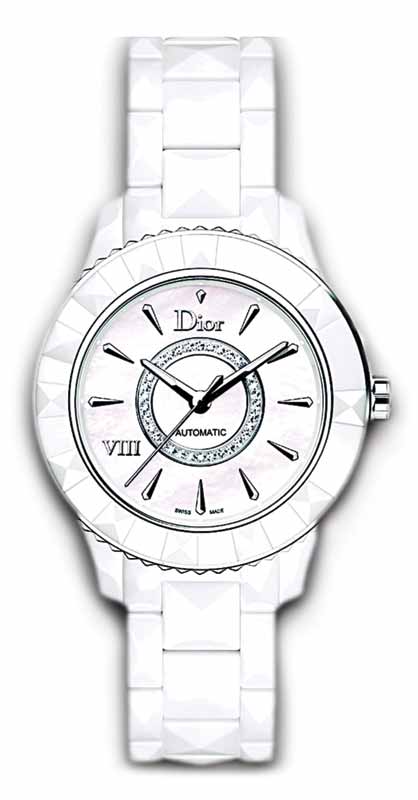 [7]
[7]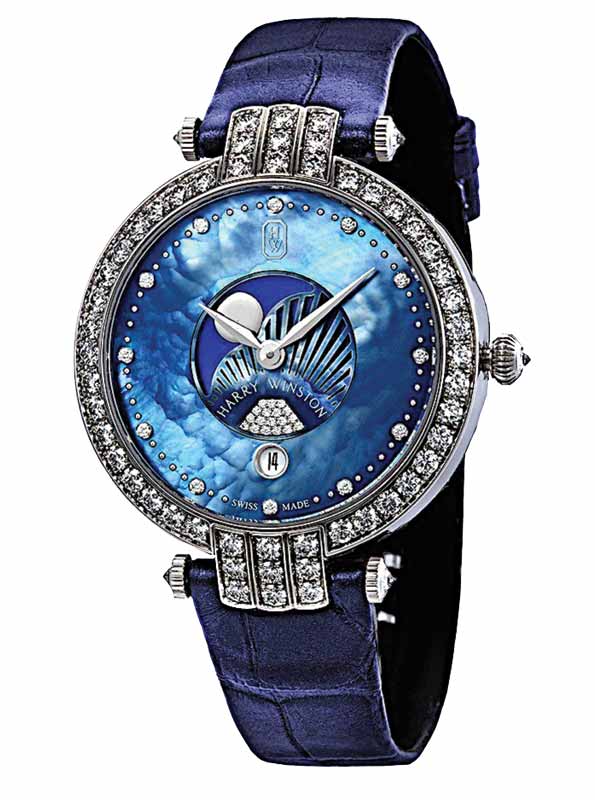 [8]
[8]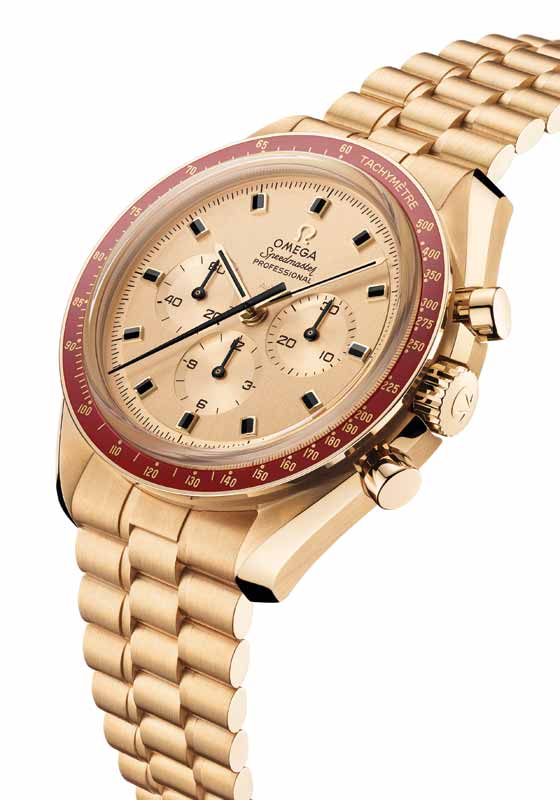 [9]
[9]